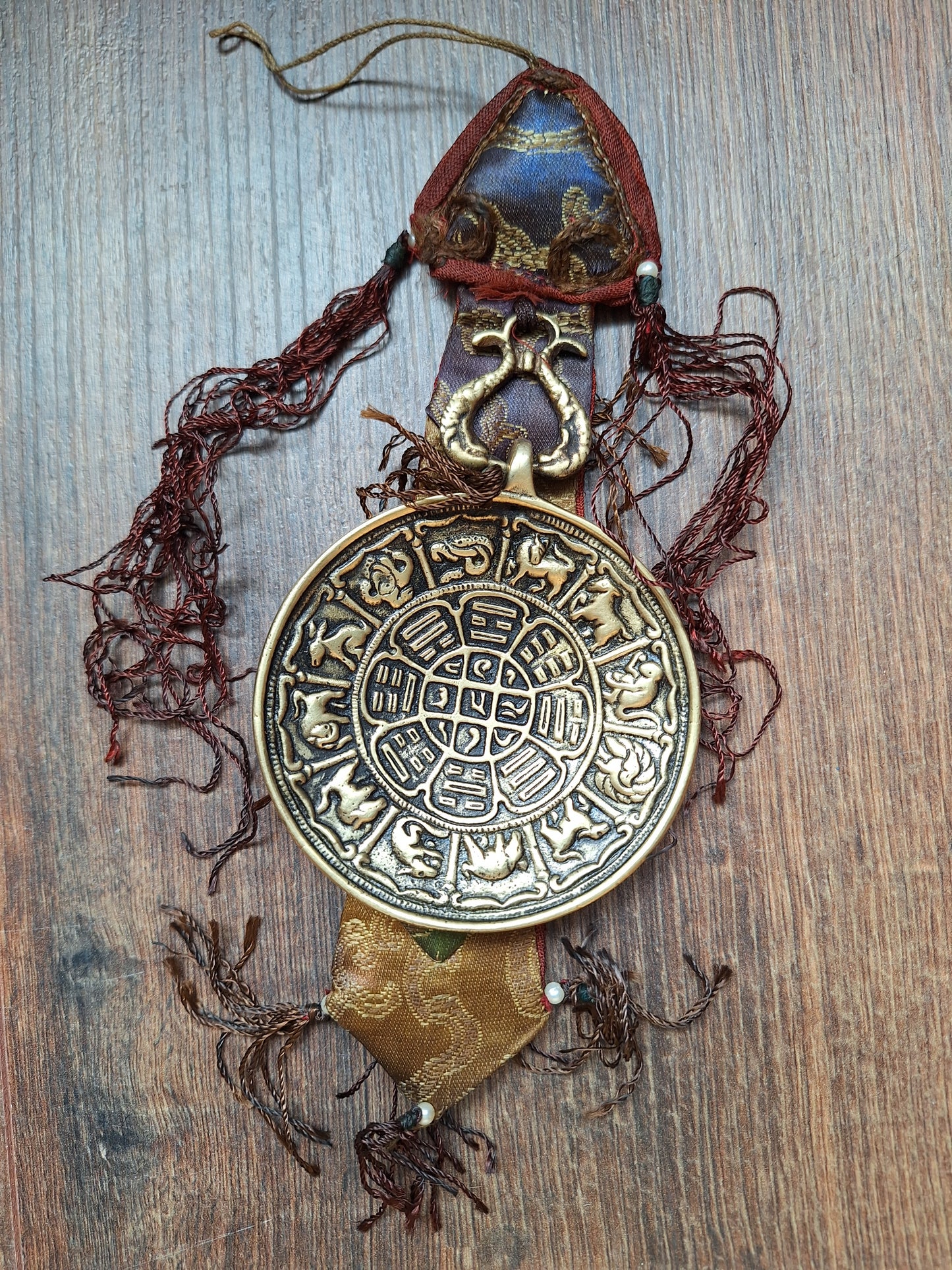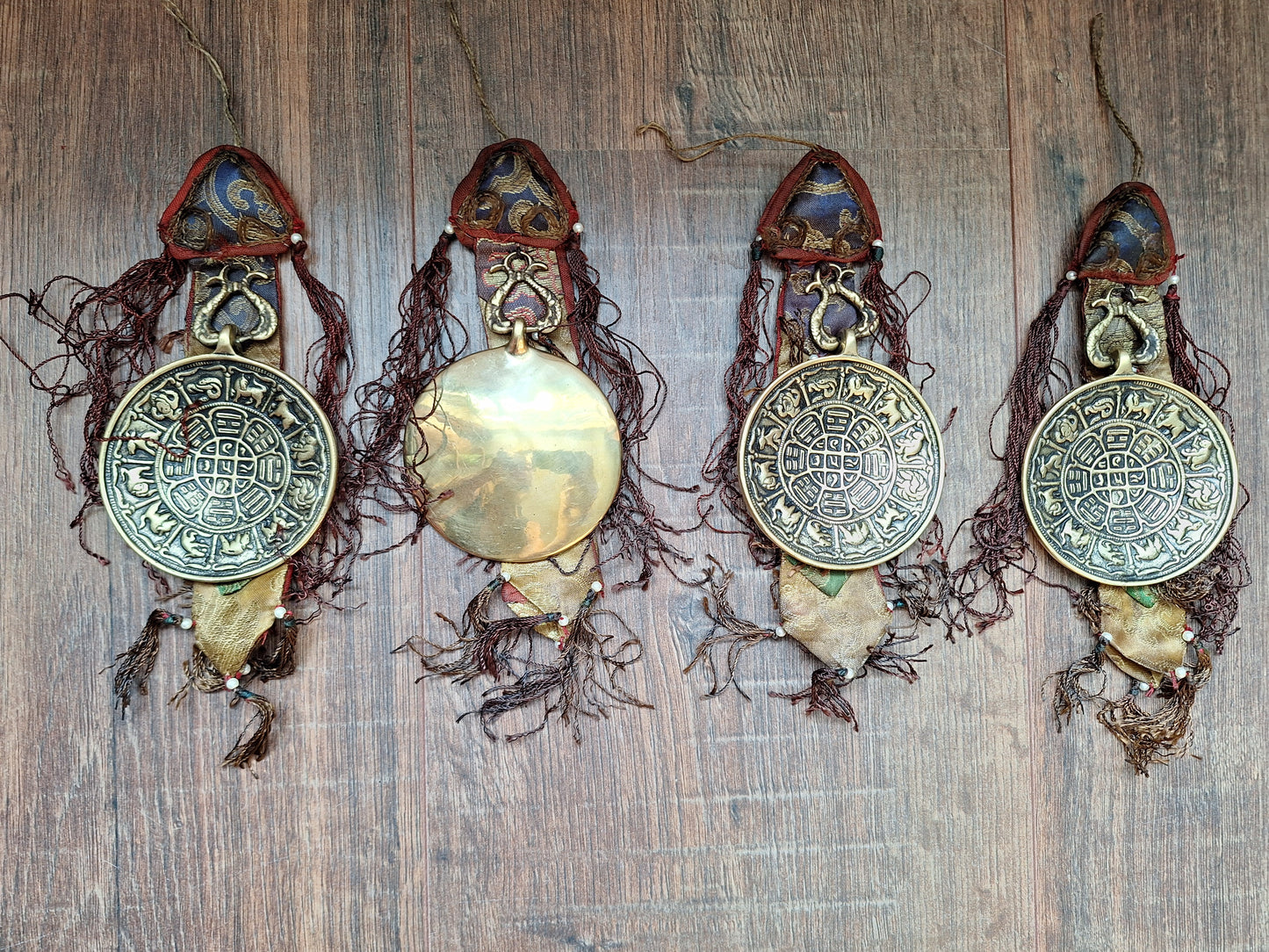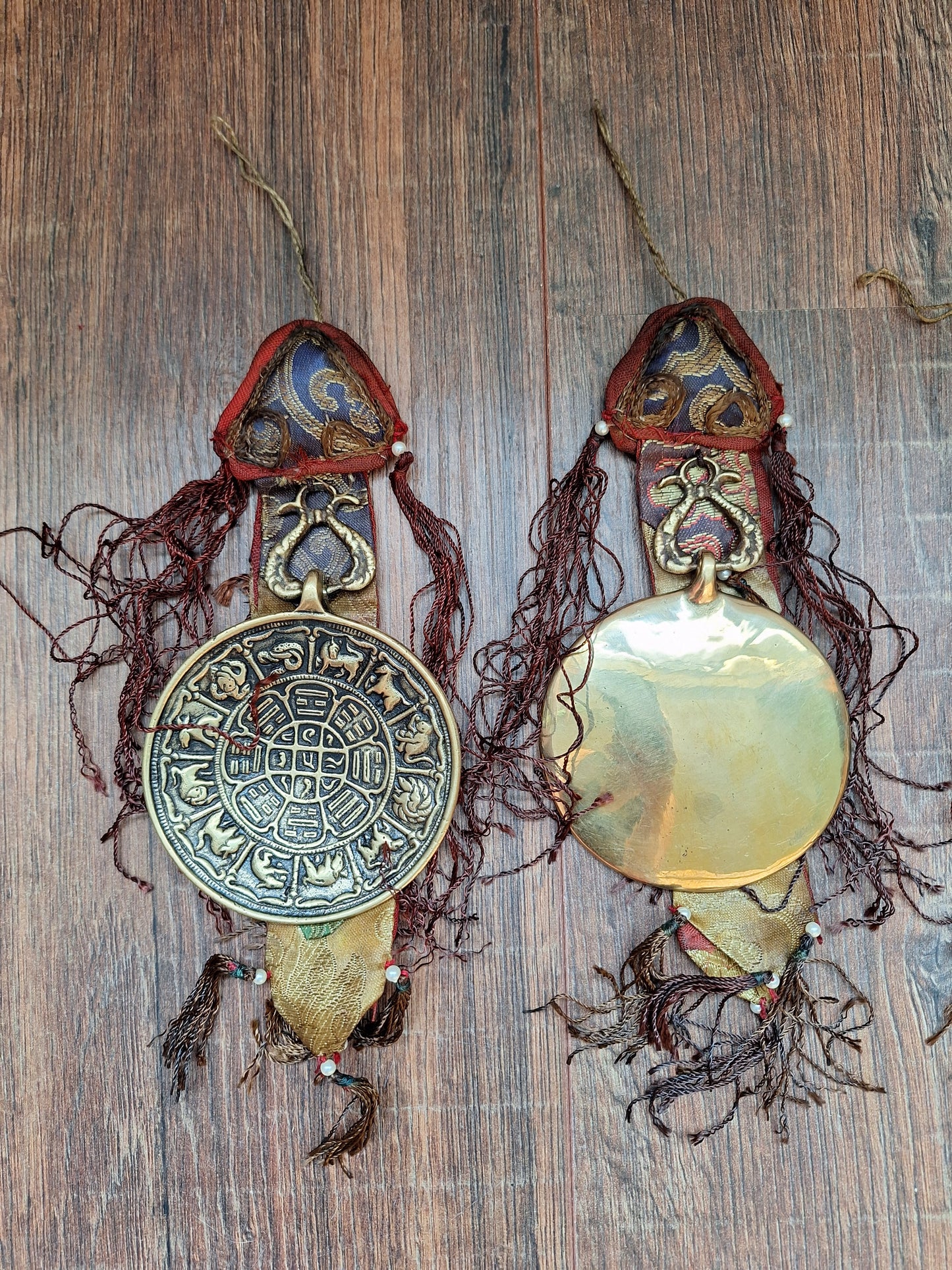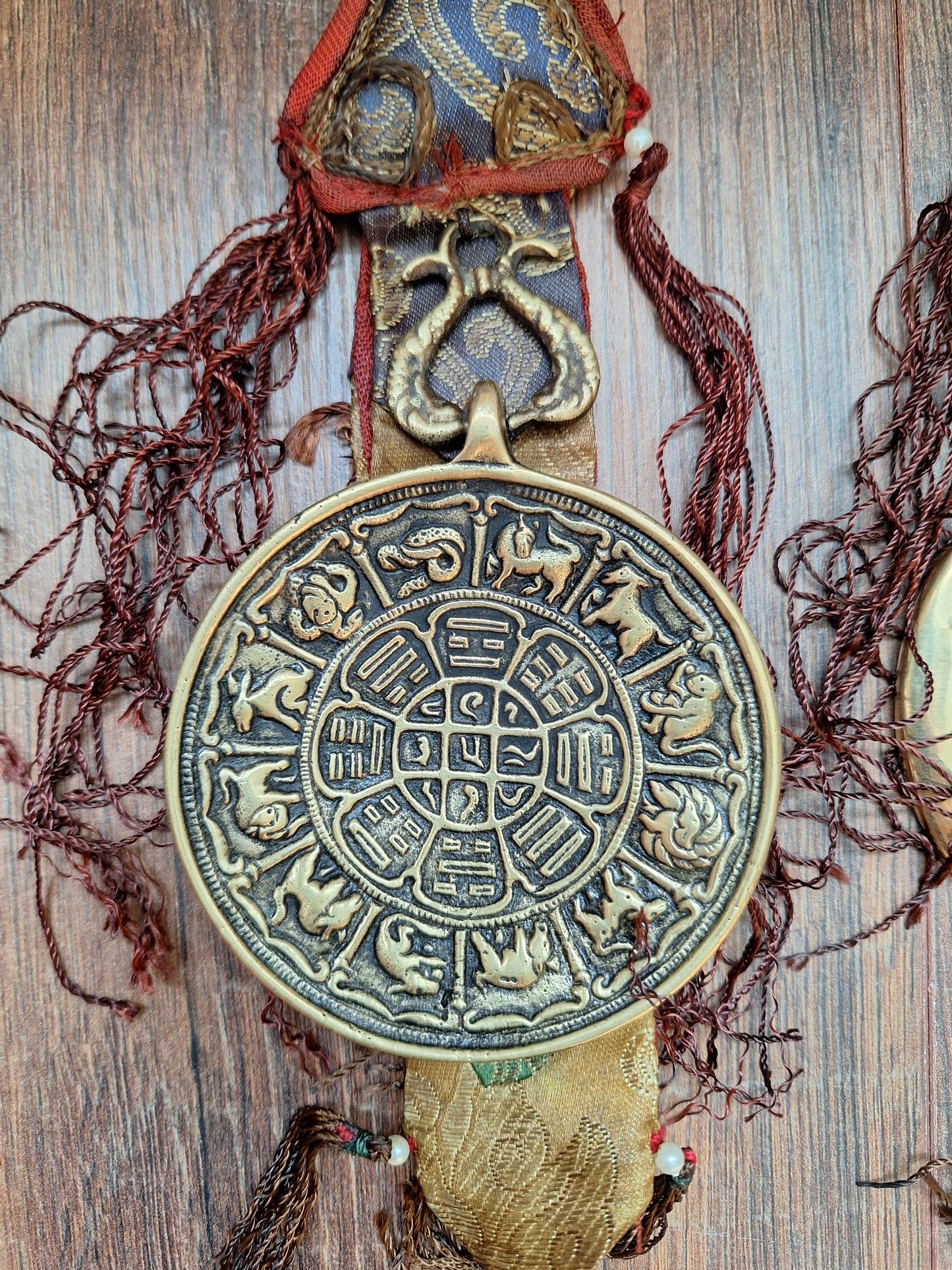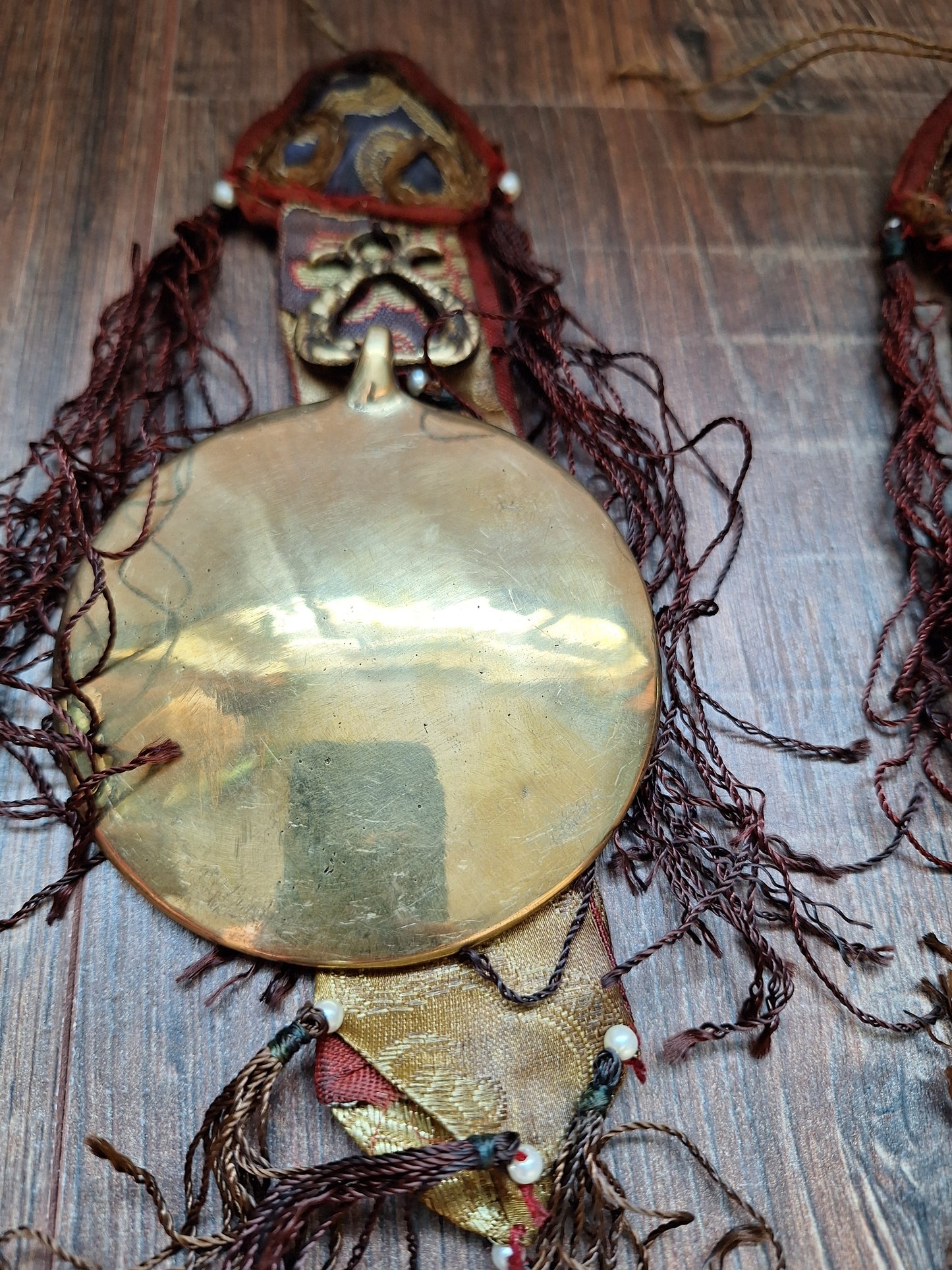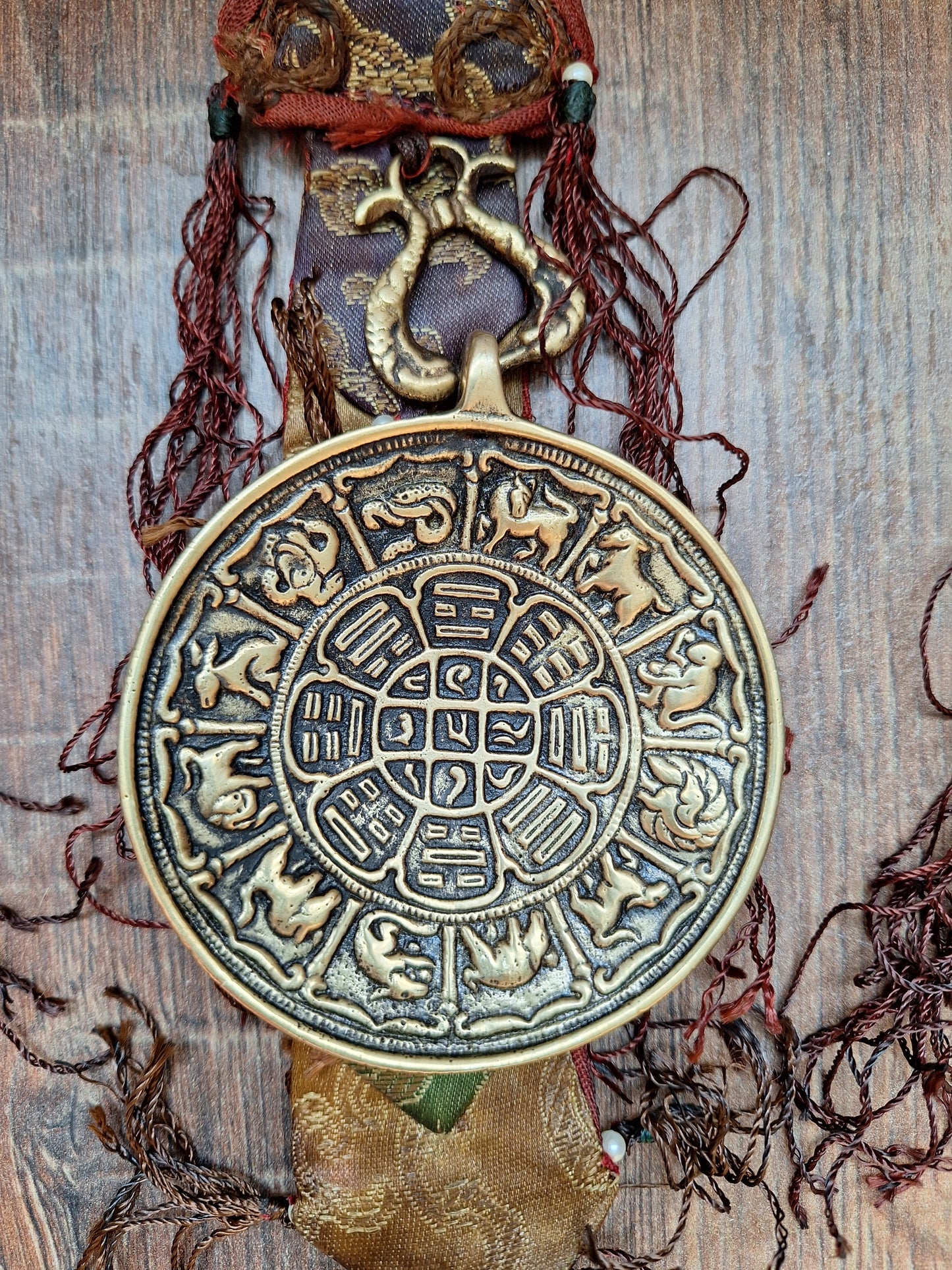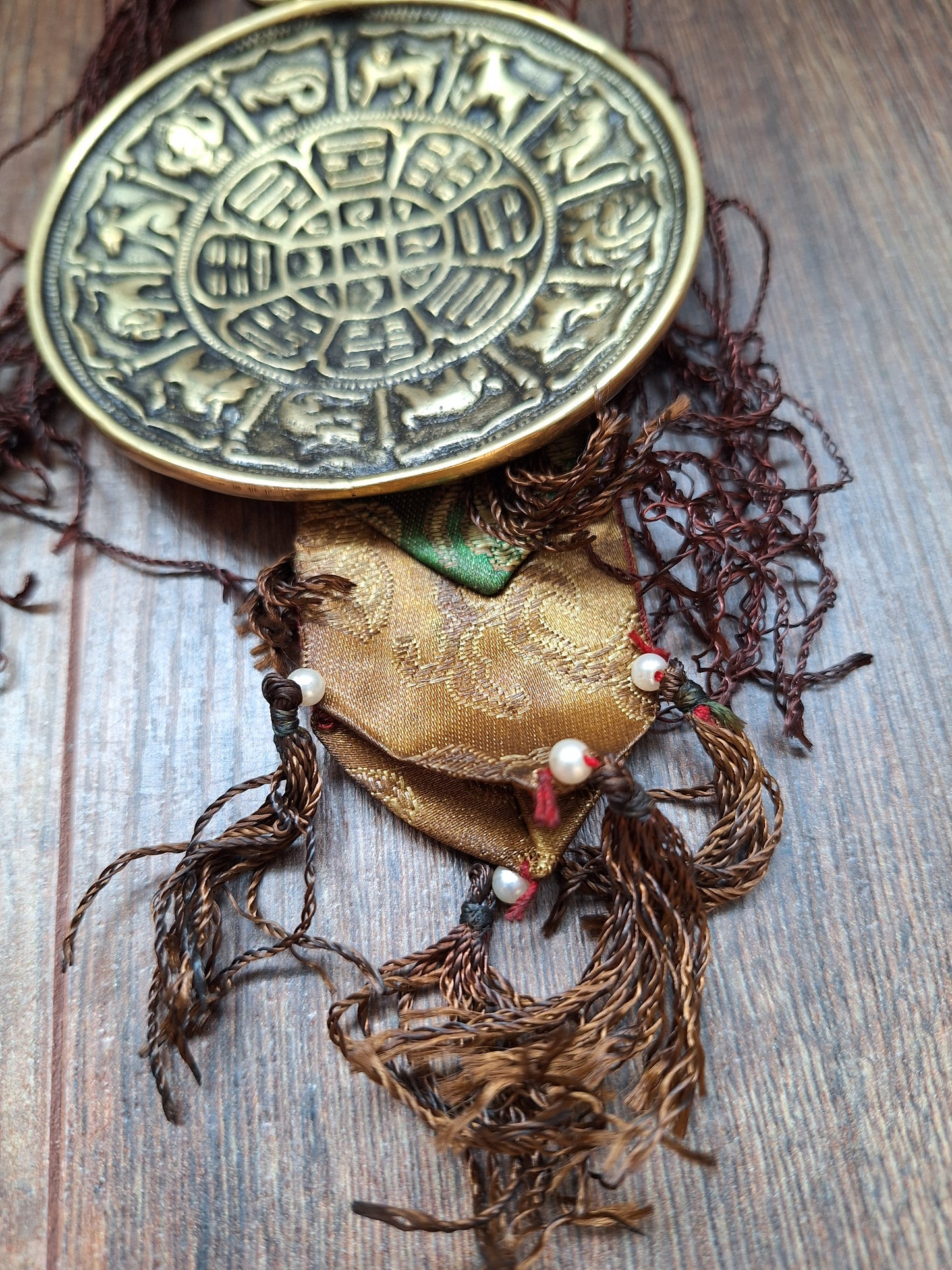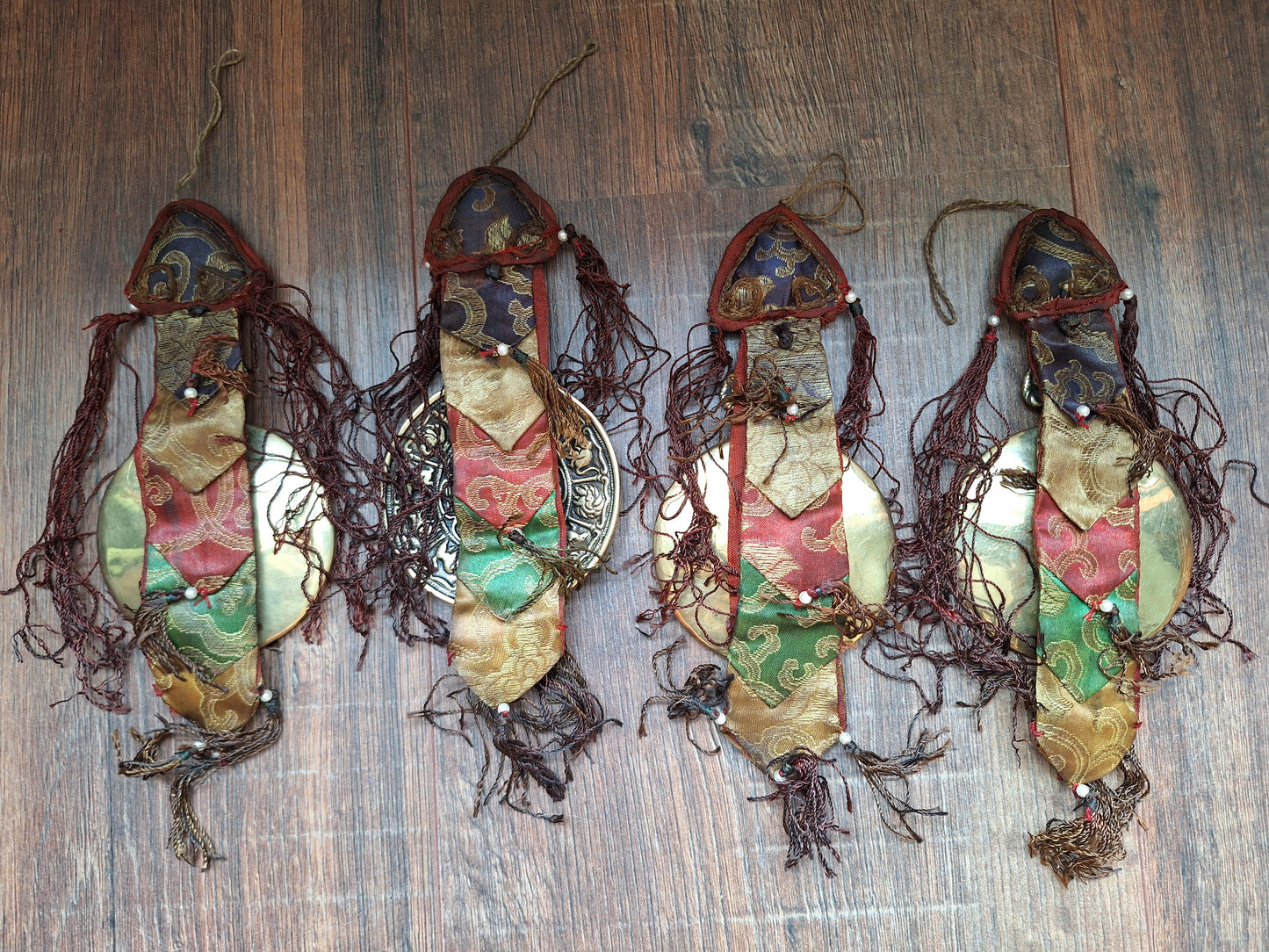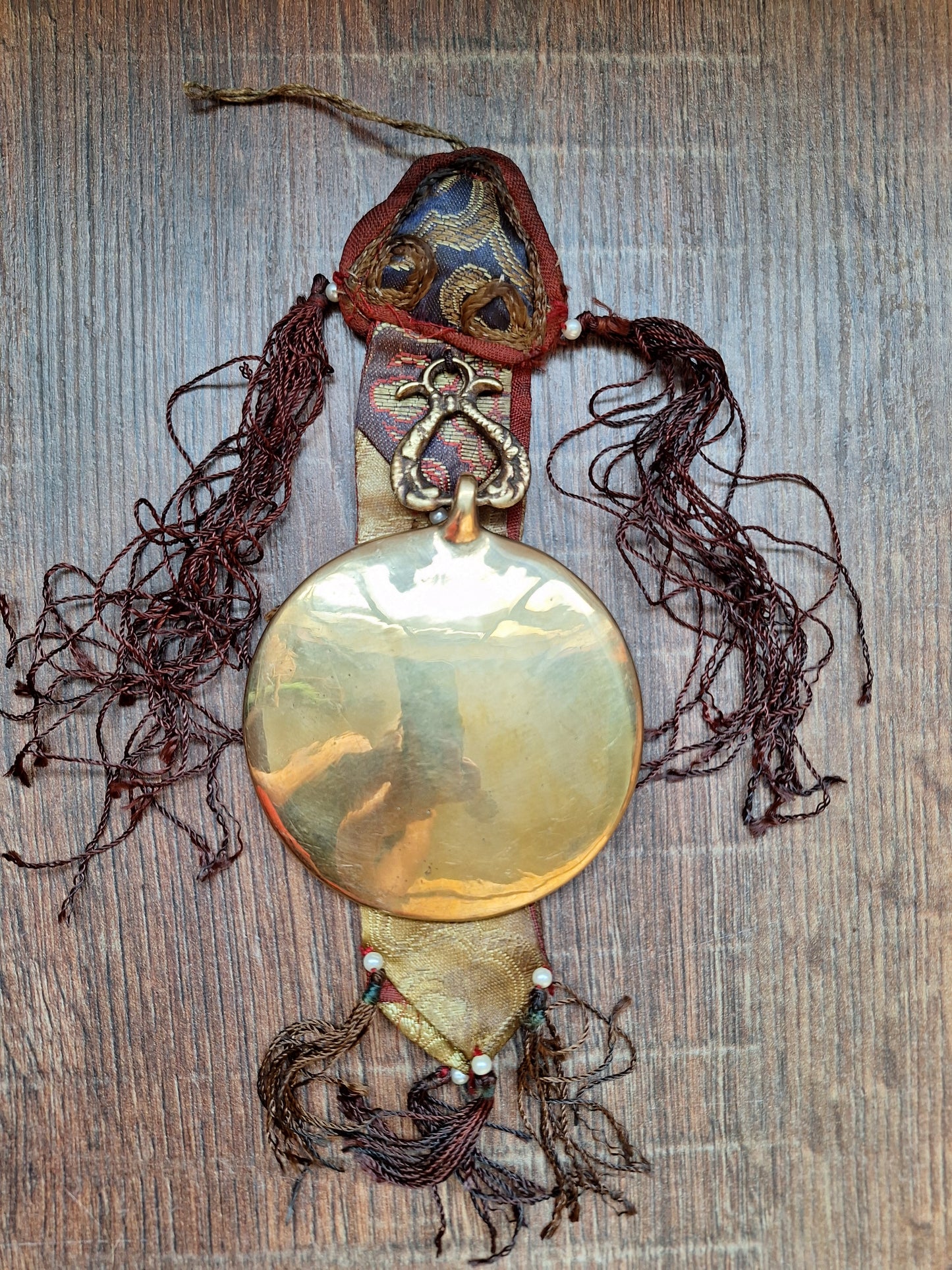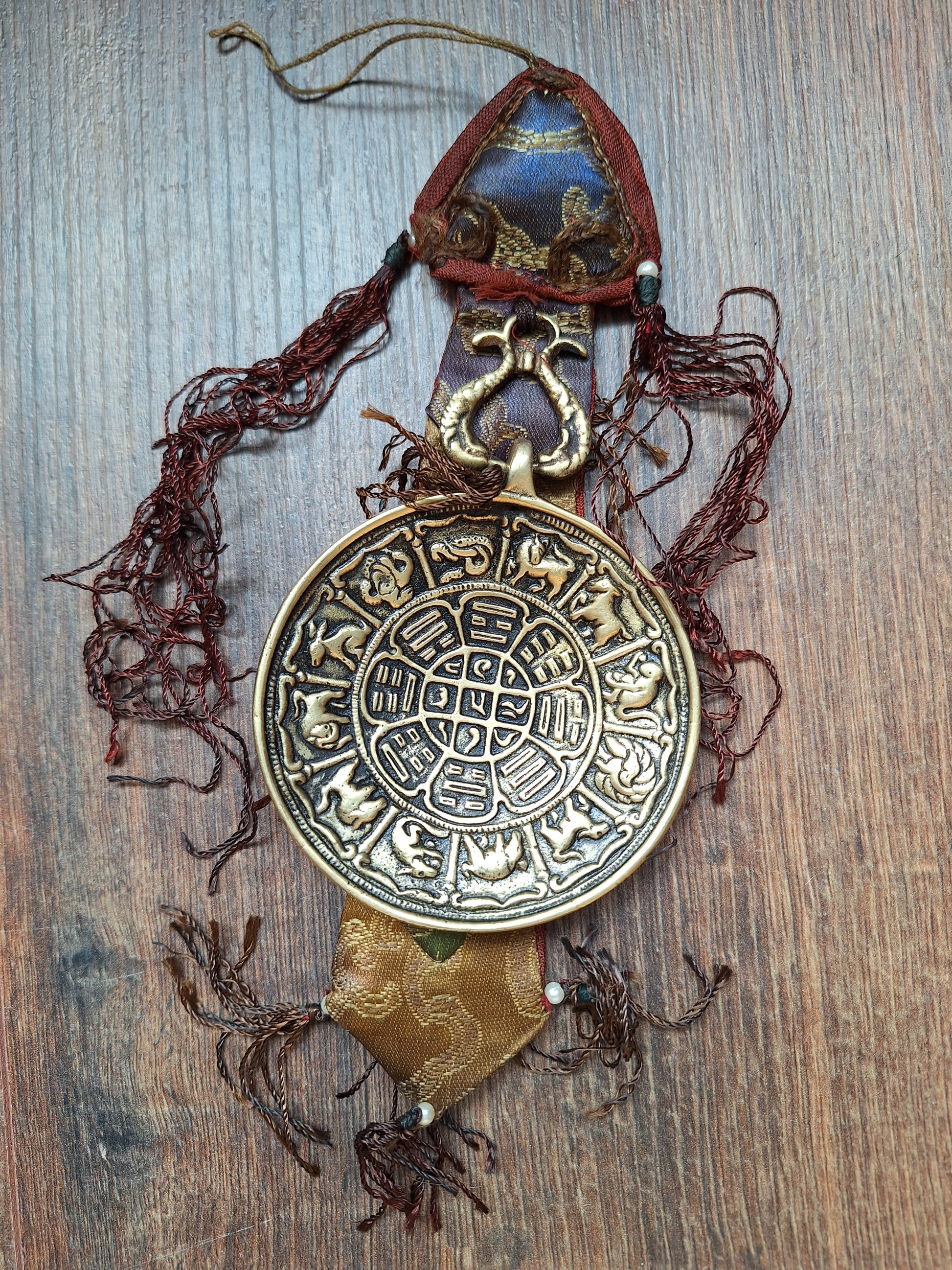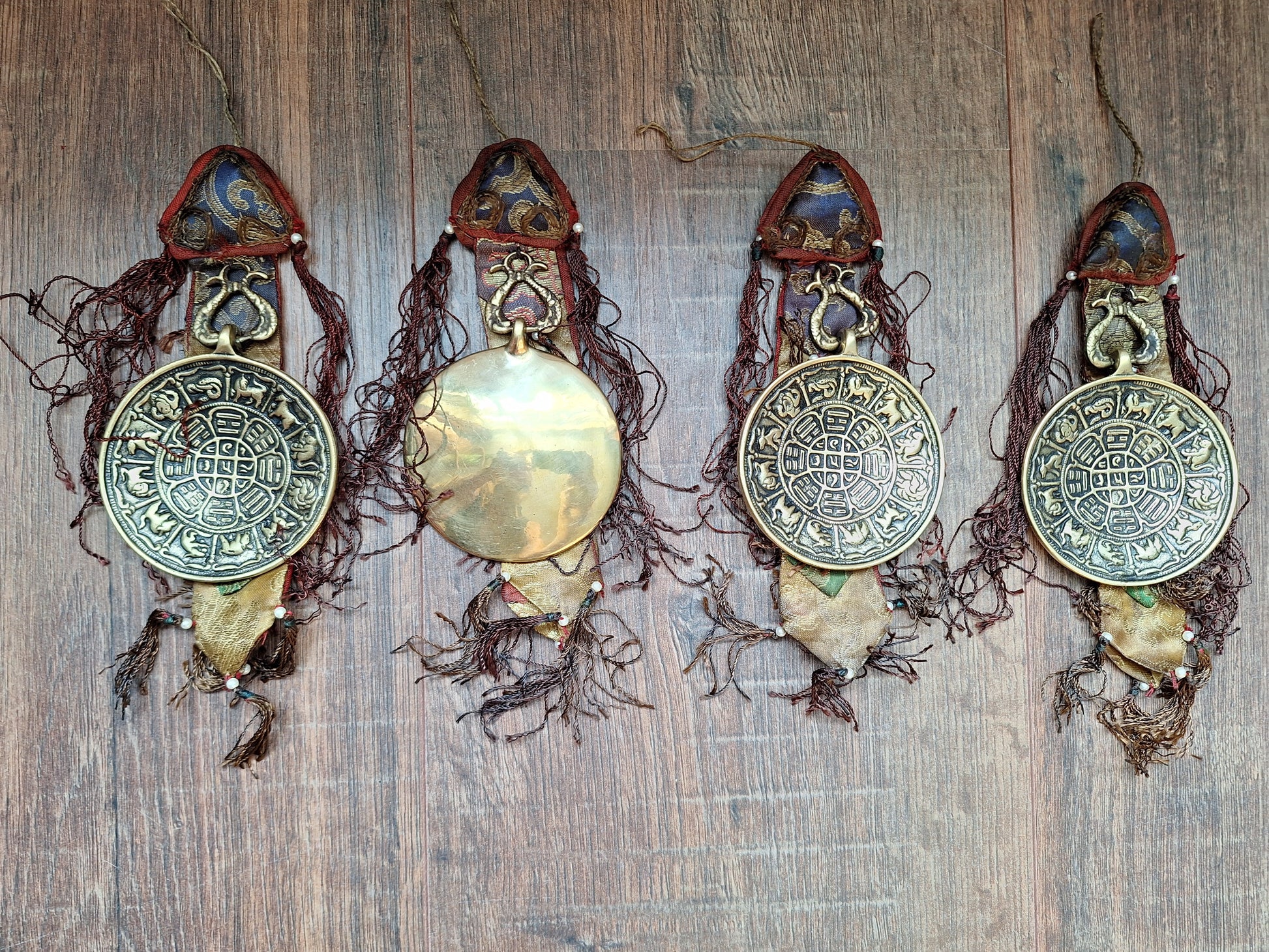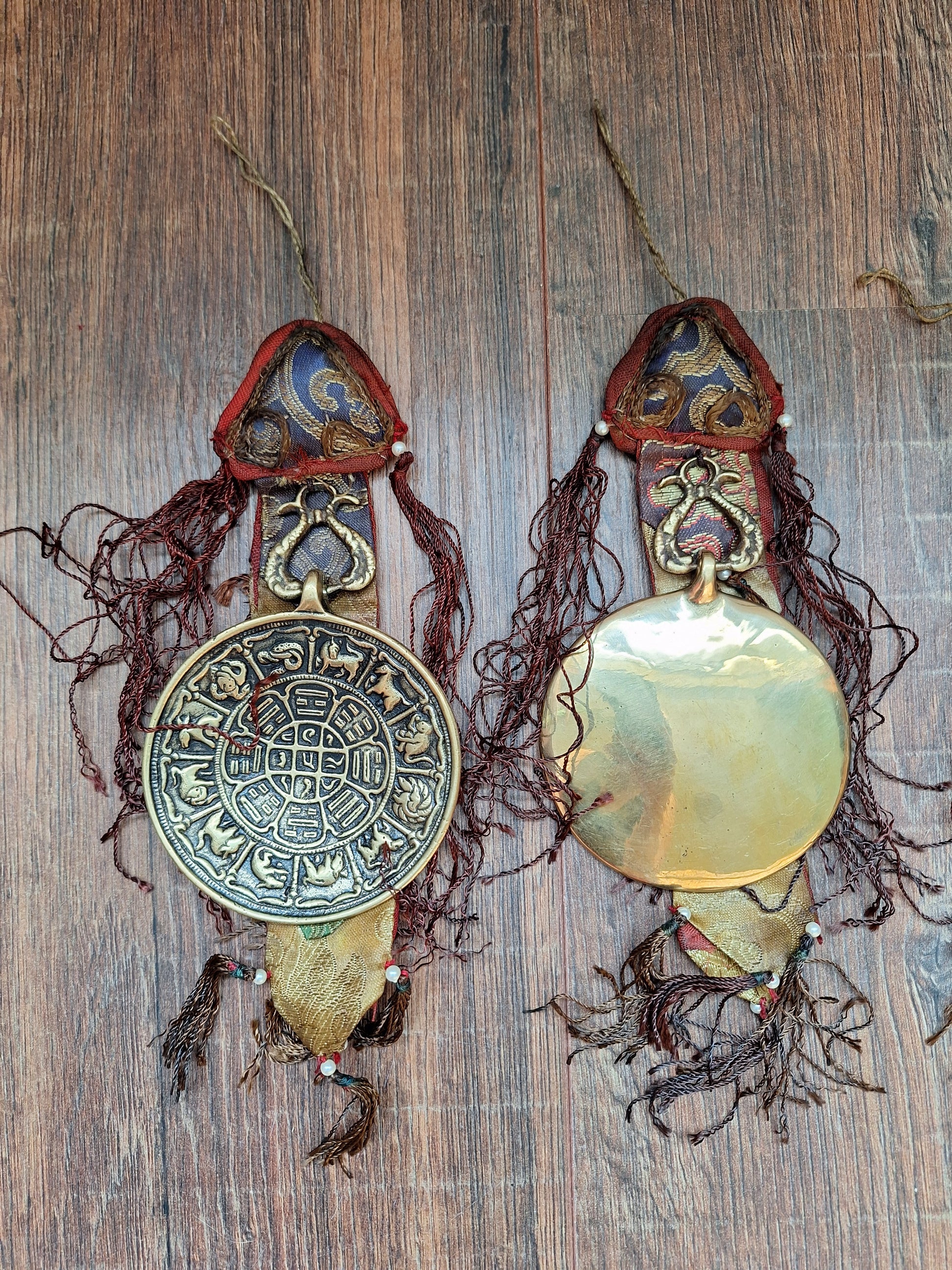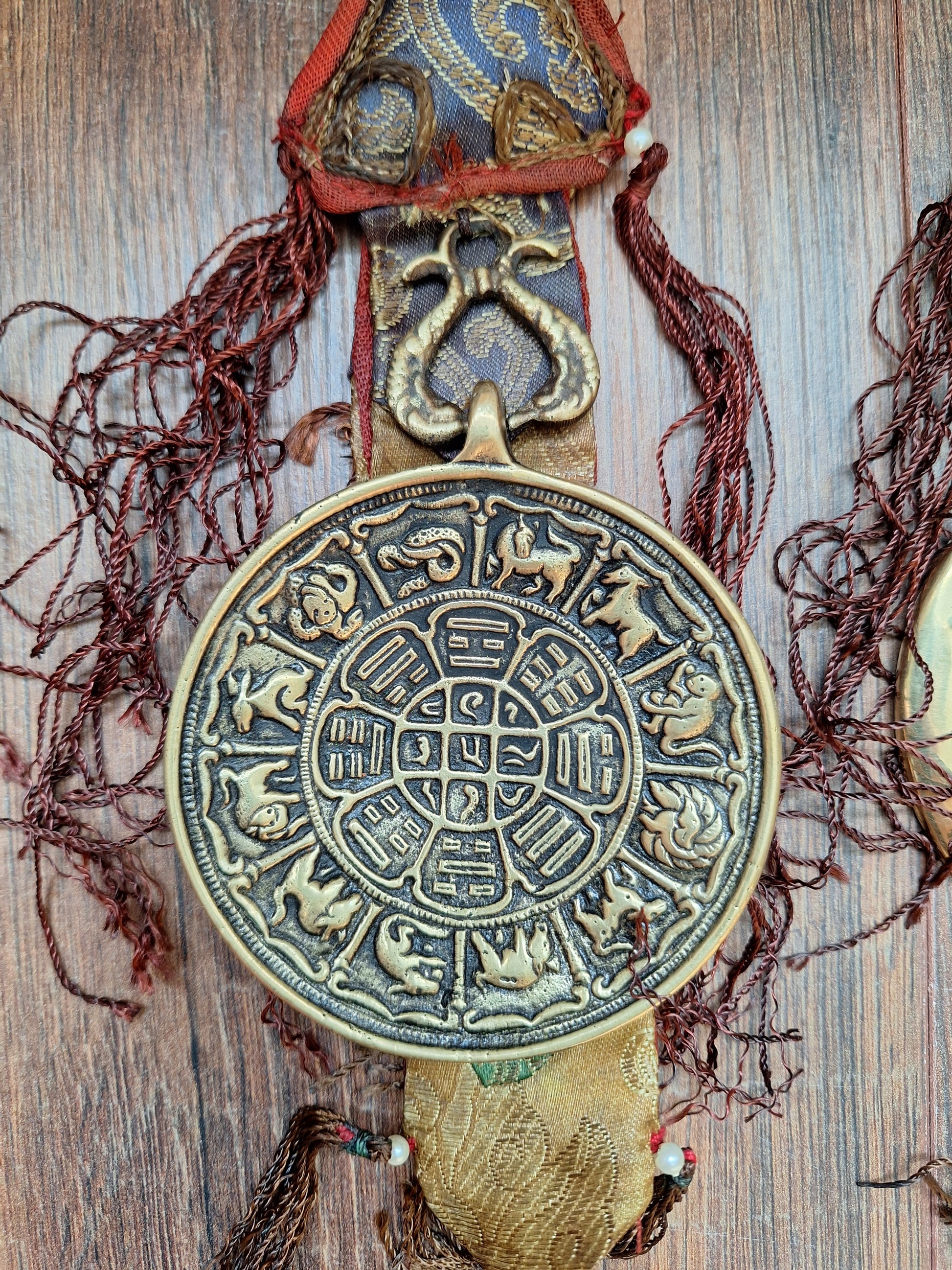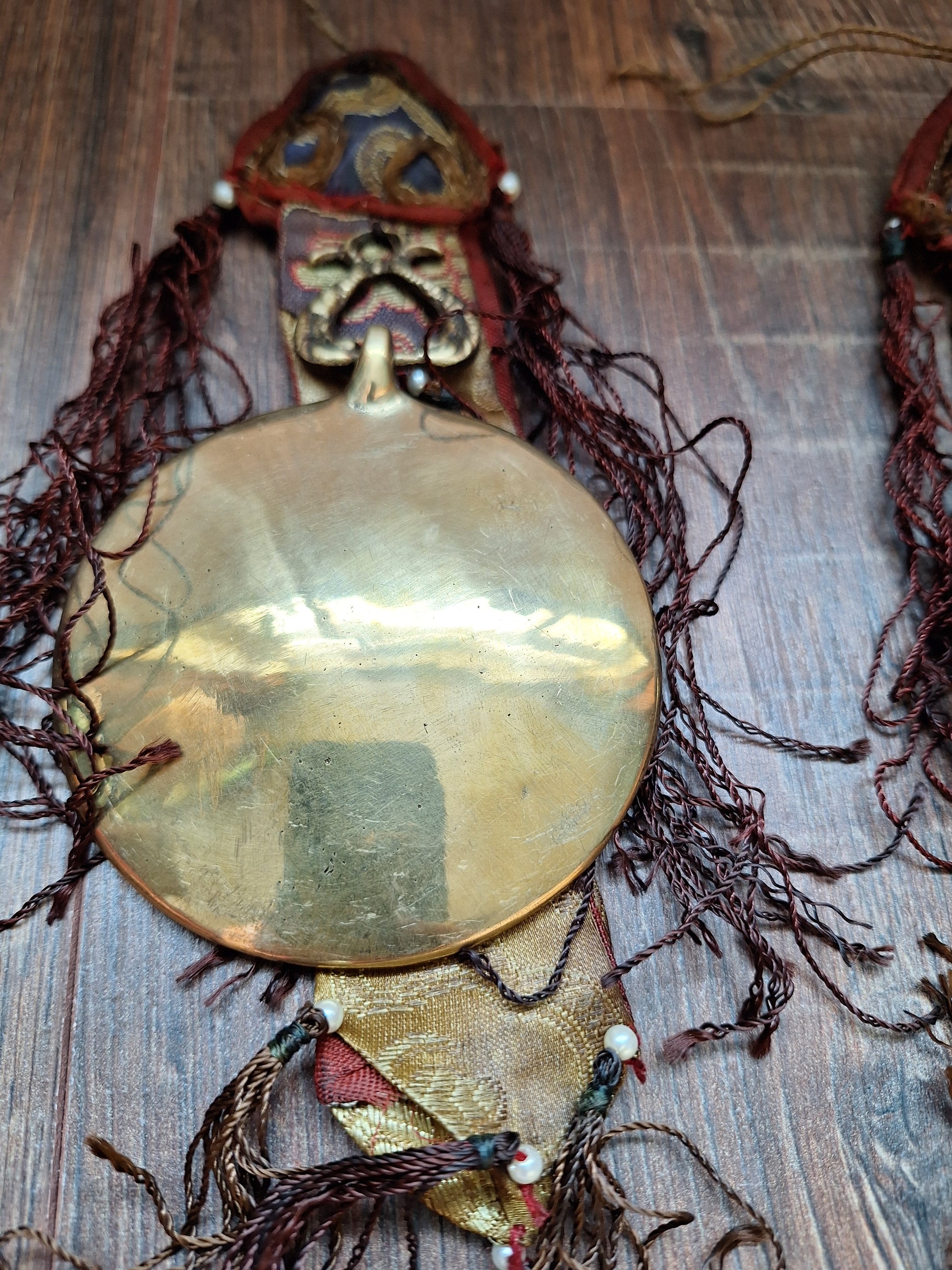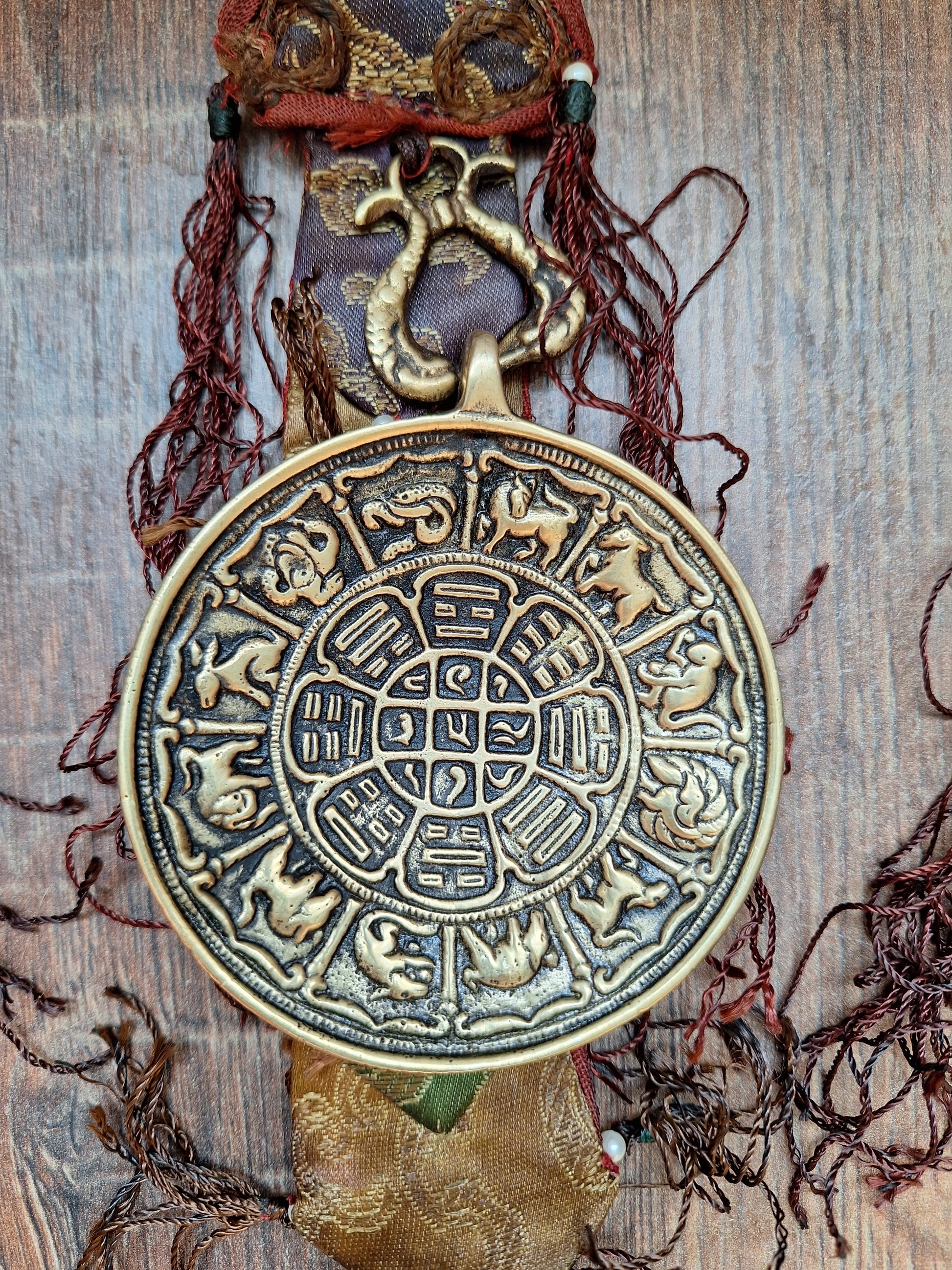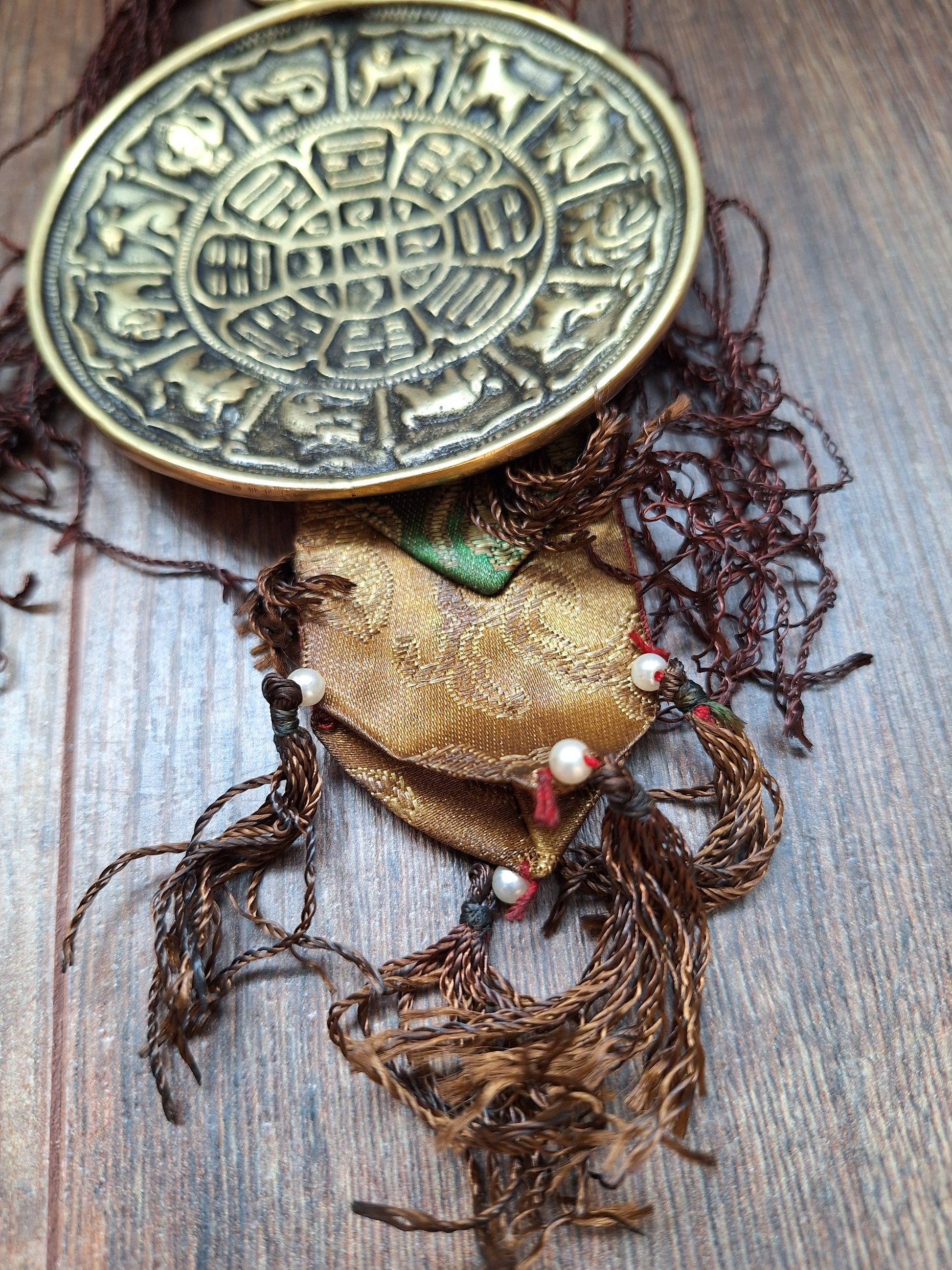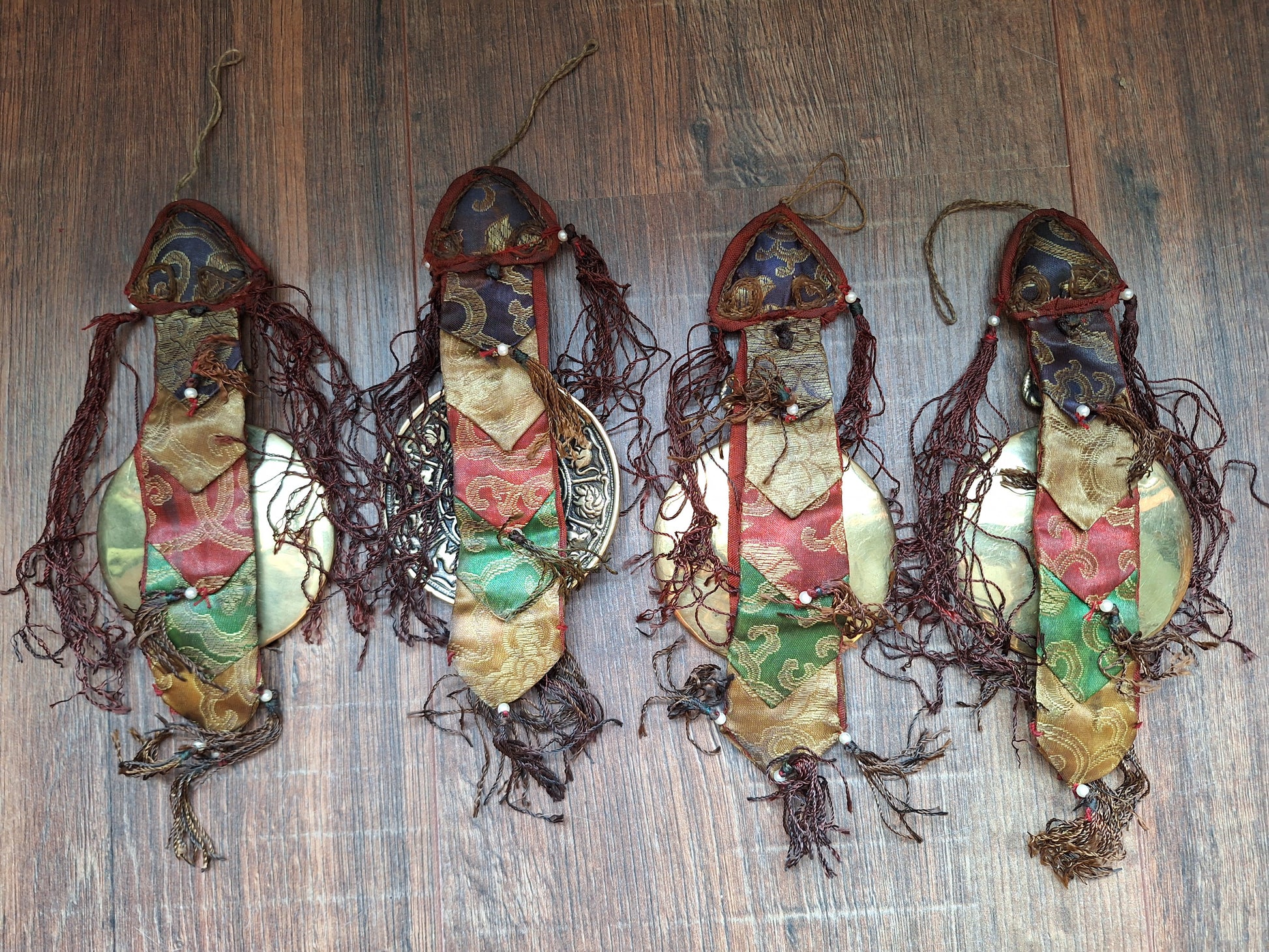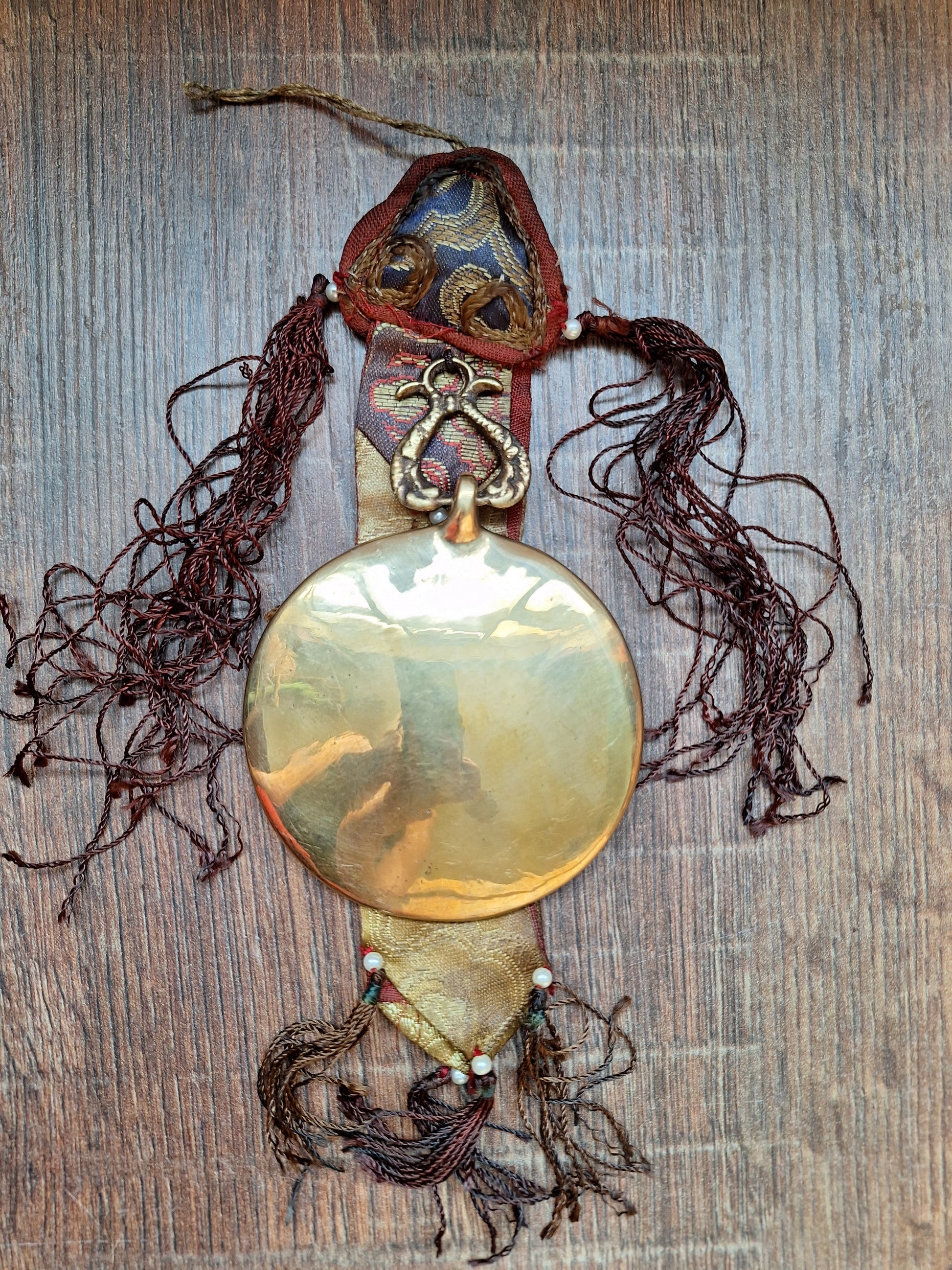Seawolf Shop
Vintage Tibetan amulet wallhanger with melong Si Pa Ho 85 millimeters
Vintage Tibetan amulet wallhanger with melong Si Pa Ho 85 millimeters
Couldn't load pickup availability
Share
Vintage wall hanging amulets made in the traditional Tibetan Buddhist style in which a symbol, amulet or figurine is combined with a banner of multi-layered silk brocade with tassels.
The multi-colored, shiny and elaborate applique banner represents the auspicious blessings of the jewels of the dharma being sent forth as multi-colored rainbow light. This typical style of fabric usage can be found in many different applications in Himalayan regions; as a small banner in amulets such as these or as handle for ritual attributes (quite typical for Tibetan shang bells for example), but also in much bigger items such as the meters-long "shambu" wall decorations or the high "chukor" ceiling hangings in temples and monasteries.
These wallhangers are all made with a thick, heavy brass melong with a depiction of the traditional Tibetan astrological system on the backside; the astrological chart of Si Pa Ho, consisting of three schematic images:
1) In the center the mystical square Me Wa Gu can be seen. In the 9 parts the numbers from 1 to 9 are inscribed, the sum of which in each column is 15. This scheme forms in Tibetan-Mongolian astrology a numerological indication of the relationship between a person and deities and spirits. Each digit governs the year, they replace each other in reverse order.
In China this mystical square has been known since 2200 BCE and is called 'Lo Shu' or Nine Halls diagram; it derives from ancient Chinese mathematical and divination traditions, such as the art of Taoist Geomancy. Nowadays it is also widely known as an important emblem in Feng Shui; the 9 parts (also called 'palaces') then represent the 8 directions of the compass plus the central position, with each part having its own energy.
2) In the ring around the square the 8 trigrams ('Ba Gua') of Par Ha Ge can be seen. The trigram symbols come from very ancient origin; they derive from symbols found on ancient Chinese divination bones dating back as long as 11th century BCE. A related version of bone oracle is still used today by Turkic and Mongolian people, and also in the lineage of Spirit of Wolf Shamanism; 'Khaziki'.
Doubled trigrams form 64 hexagrams, which form the core of the I Ching, the Book of Changes.
Each trigram is a divinatory grapheme and represents different dynamics, energies, cardinal points, animals, seasons etc. In depictions such as on these mirrors, where the 8 of them together form a circle, it symbolizes heavenly order, a healthy balance and right flow of energy.
3) In the outer ring the 12 animals of the eastern zodiac can be seen. Just like the circular arrangement of the trigrams, also this motive adds to the idea of heavenly order. But also its presence, when used on shamanic mirrors, symbolizes control over time and space, an important core principle in the practice of shamanism.
Read more about the origin, design and usage of (shamanic) mirrors in the general description of our webshop collection "Mirrors and Melongs".
The melongs used for these wallhanging amulets have a diameter of 85 millimeters (measured without their eyelets) and are made from a thick, heavy layer of brass.
Including the brocade banner they are 20 centimeters long.
These amulets are from vintage origin and might show some signs of their age and previous usage, but overall both the fabric and the mirrors are in good condition (if you happen to find some small scratches or dull spots on the mirrors, a good (metal)polish treatment works miracles).
There are two types available: three of the mirrors have been sewn on the fabric with the calendar-side facing forward, and one with the mirror-side. You can choose your favorite style via the selection-menu.
